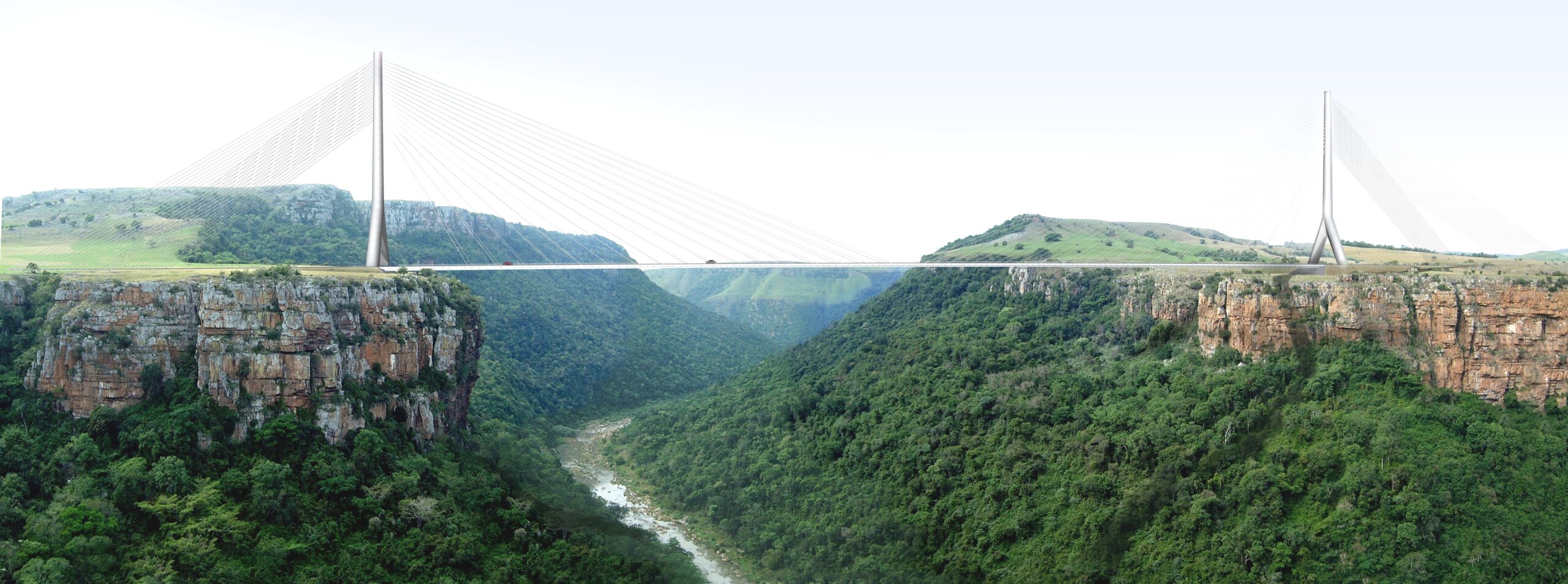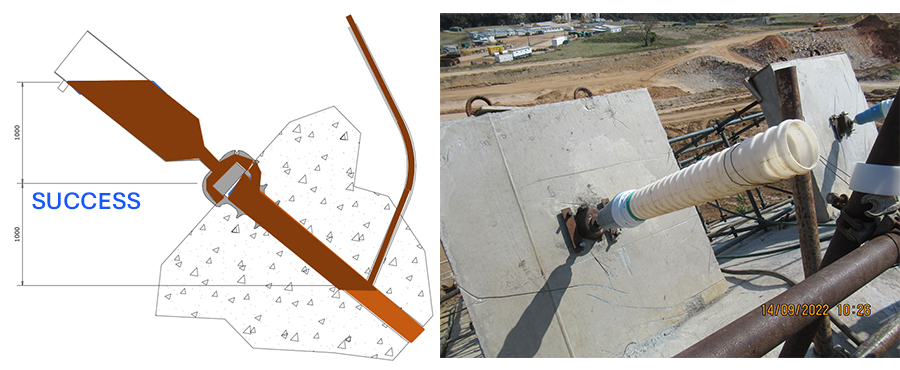
Grout trials and controlled testing
The engineers conducted full-scale grout trials to investigate the effects of the differential hydrostatic pressure on uncured grout. This enabled the team to develop a tailored grouting procedure for the project. During the trials it became apparent that eradicating the water bleeding phenomena entirely would be very difficult, regardless of water cement ratio. Therefore a ‘bleed management’ solution was a more viable option.
- Grout mix: SMEC examined different grouting materials, both imported and locally manufactured, and discovered that a locally sourced product performed better. The viscosity-modified grout altered the grouts flow characteristics and reduced the amount of bleed water. This finding highlighted the value of local knowledge and expertise.
- Use of a grout cap and grout reservoir: It was vital to prevent bleedwater from accumulating in the post-tension anchor. The team devised a solution which gave the bleedwater a free path to migrate up to a point where it was visible and where it could be managed. The grout cap was an extension device which was attached to the top of the anchorage and provided a channel for the bleedwater to migrate past the anchorage and into the reservoir from where it could be removed.
- Reinjection vents and curing time:To manage the bleeding phenomena the engineers used strategically placed reinjection vents to control the curing process. The reinjection of fresh grout within two hours of grouting was effective in pushing out the bleed-affected grout before it set.
- Flow times: In this instance, slowing the flow time had no effect on the quality or filling ability of the grouting mixture.
Demonstrating successful removal of bleedwater
Lessons learned
The case study of the Msikaba Bridge project has a number of implications for the construction industry:
- Differential hydrostatic pressure: Engineers need to be aware of the effects of differential hydrostatic pressure when grouting steep inclined tendons.
- Bleeding: The bleeding phenomena is more pronounced in steep inclined tendons, and engineers need to take steps to manage it.
- Industry standards: The industry norm for grouting standards does not specifically cater for all applications, and engineers need to develop tailored grouting procedures for unconventional applications.
- Full-scale grout trials: Full-scale grout trials can be used to investigate the effects of different factors on the grouting process and to develop tailored grouting procedures for specific applications.
Conclusion
The engineers on the project overcame several challenges to develop a successful grouting procedure for steep inclined tendons. The project also highlights the importance of conducting full-scale trials when developing new grouting procedures for unconventional applications. The lessons learned from this project can be used to improve the grouting of steep inclined tendons on future projects.

 A Strategic Outlook on Future-Ready Aviation and the Need for Industry Change
A Strategic Outlook on Future-Ready Aviation and the Need for Industry Change
Airports worldwide are investing billions annually to keep pace with the surging demand for travel.
 IoT at Msikaba Bridge
IoT at Msikaba Bridge
Advancements in digital and Internet of Things (IoT) technology are reshaping how we design, operate, and maintain mega structures.
 Torsion: The Silent Killer of Intake Towers
Torsion: The Silent Killer of Intake Towers
Torsion is often neglected in the seismic analysis of intake towers, both for new and existing designs, due to its complexity and limited guidance in manuals. This neglect stems from the assumption that torsional effects are insignificant or that the reinforcement for shear and bending moments can also handle torsion.
 Debunking the myths of a Digital Mindset – it’s a people thing
Debunking the myths of a Digital Mindset – it’s a people thing
Digital transformation is well established throughout Engineering Consultancies, with digital teams and digital tools peppered throughout service offerings. While these services and tools provide strong value, the greater advantage comes when an organisation embraces a digital mindset; harnessing technology, data, and continuous learning to deliver truly exceptional outcomes for our clients and communities.






